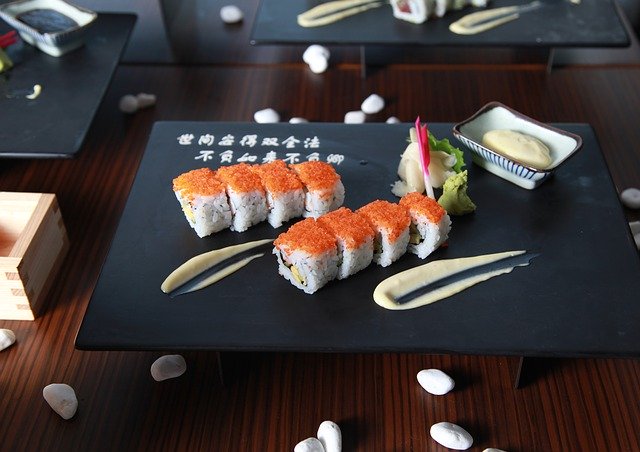TYPES OF SUSHI
Sushi rice can be accompanied by a variety of ingredients consisting of seafood or vegetables. Popular sushi dishes usually ordered are:
1. Nigiri – usually, raw fish or shellfish served on the top of rectangular molded rice sushi
2. Sashimi – for purists who want to eat just the fish or shellfish served alone without the rice sushi
3. Norimaki – sushi rolls with rice and different fillings wrapped in seaweed; typically served in countries outside of Japan. Popular sushi rolls include Tiger Rolls, California Rolls, Vegetable Rolls, Spicy Tuna Rolls, and Caterpillar Rolls to name a few
4. Uramaki – similar to Maki, except seaweed wraps around the filling and the rice is on the outside
5. Gunkan – petite cups of sushi rice and dried seaweed with different fillings, especially fish eggs and sea urchins
6. Temaki – sushi hand-rolled into a cone shape with seafood fillings
The categories of sashimi (raw seafood) served with sushi has no limits and depends on the season and fishery location: salmon, tuna, mackerel, sweet shrimp, clams (cooked or raw), yellowtail, roe, squid (body is served raw, the tentacles cooked) halibut, crab meat (cooked), sardines, red snapper, octopus (cooked), trout, sea urchin, and eel (deep-fried or boiled).

